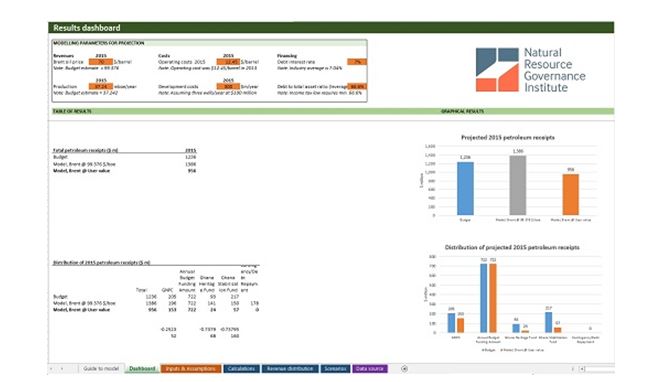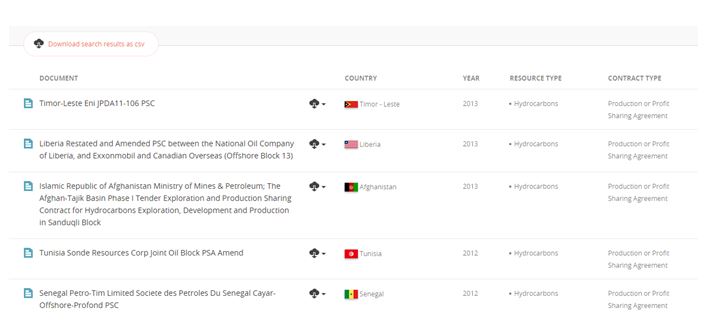
IMF's Open FARI Model Release an Important First Step
Today, the International Monetary Fund released its model for evaluating and designing oil and mining deals in resource-rich countries. We welcome the move. With growing availability of open data on extractives and a growing community of users of such models, it’s an important step toward bettering public scrutiny and understanding of resource deals and the flow of revenues.
Last year, we wrote about why this matters so much for citizens and governments. Models like the Fiscal Analysis of Resource Industries (FARI) are used to design the deals countries sign with companies to extract their resource wealth. Lots of data, assumptions and forecasts go into these models. This can have major consequences for the revenues that countries subsequently receive. Therefore, these models are a crucial step in opening up a discussion on whether countries are “getting a good deal” for their resources. Open models help citizens to monitor contracts enhance public understanding of what money is to be expected to reach the budget.
Today’s release makes the Excel-based model available for use by anyone. The IMF's completed models or results for any particular analysis are still not typically available—governments can opt-out from disclosing them. However, an increasing number of reports are becoming accessible. (See a Philippines example or a full list on the FARI site.)
If governments fail to disclose their own projections or citizens want to challenge the assumptions, the public can now access the framework and put it to work using their own data.
How does modeling help resource-rich countries?
Over the last year, we and our colleagues have demonstrated how open modeling can benefit citizens and governments.
When details of a gas agreement was leaked in Tanzania, lack of understanding of the deal created confusion and some unfounded allegations. With modeling of the fiscal terms, we were able to help clarify the story. We also conducted a retrospective review of earlier rosy forecasts on the potential of a new iron ore mine in Sierra Leone and discussed lessons for forecasting in challenging governance environments. In Ghana, we helped MPs and CSOs assess the potential implications of the oil price fall on the country’s 2015 budget.

Screen shot of the open model of Jubilee field in Ghana
Many other CSOs and consultancies have also started to use open fiscal models as part of their work. Global Witness has shed light on controversial contracts in Uganda, while OpenOil built models for a Glencore mine in Chad and a gold mine in Tanzania.
The future of open fiscal models
The FARI is the state-of-the-art tool for modeling resource projects. Government officials, experts from international organizations and independent consultants have been trained to use the model. This model was often exchanged using USB disks or e-mails; it’s now becoming available to all.
To make use of this powerful tool, users will need to get access to critical information on the projects they want to model. Until this point, efforts have been hampered by the closed nature of models, but also by limited access to data. Secret contracts, undisclosed tax payments and hidden cost assumptions make such analysis challenging.
First and foremost are resource contracts, which provide the key input to these models. They describe the tax terms applicable for a particular oil field or mine. As governments and companies realize it is in their interest to disclose these contracts to help dispel suspicion or rumor about the deals struck, the availability of contracts is growing rapidly. We are currently working with partners to upgrade the resource contracts directory and to maximize interoperability with fiscal models. We are doing this by annotating key terms in the contracts and making them fully searchable as raw text. The new resource contracts website will be launched at the Open Government Partnership Global Summit in Mexico City in October.

Screen shot of the upcoming www.resourcecontracts.org website
Another critical component is data that discloses revenues, costs, production and reserves at the project level. NRGI scraped 223 Extractive Industries Transparency Initiative reports originally in PDF format to unlock machine-readable data. Based on successful implementation of similar laws in the U.K., we made recommendations to the U.S. Securities and Exchange Commission on how to disclose data on payments by extractive companies to maximize usability and interoperability. We are also building a new repository to harvest project-level data scattered across different sources—it will be released later this year.
Next year will mark a new milestone: project-level reporting in many new EITI reports and the release of project-level payment data by all U.K.- and French-listed or large registered extractive companies. This will bring a flood of new project-level information with which to model.
For those interested in what the release of the FARI model might mean, or how you can go about modeling a contract or project in your country, please get in touch. You can email us directly at [email protected]. Also, please sign up to our Google Group for those interested in learning more about resource projects.
Jim Cust is NRGI’s director of research and data. David Mihalyi is an NRGI economic analyst.
